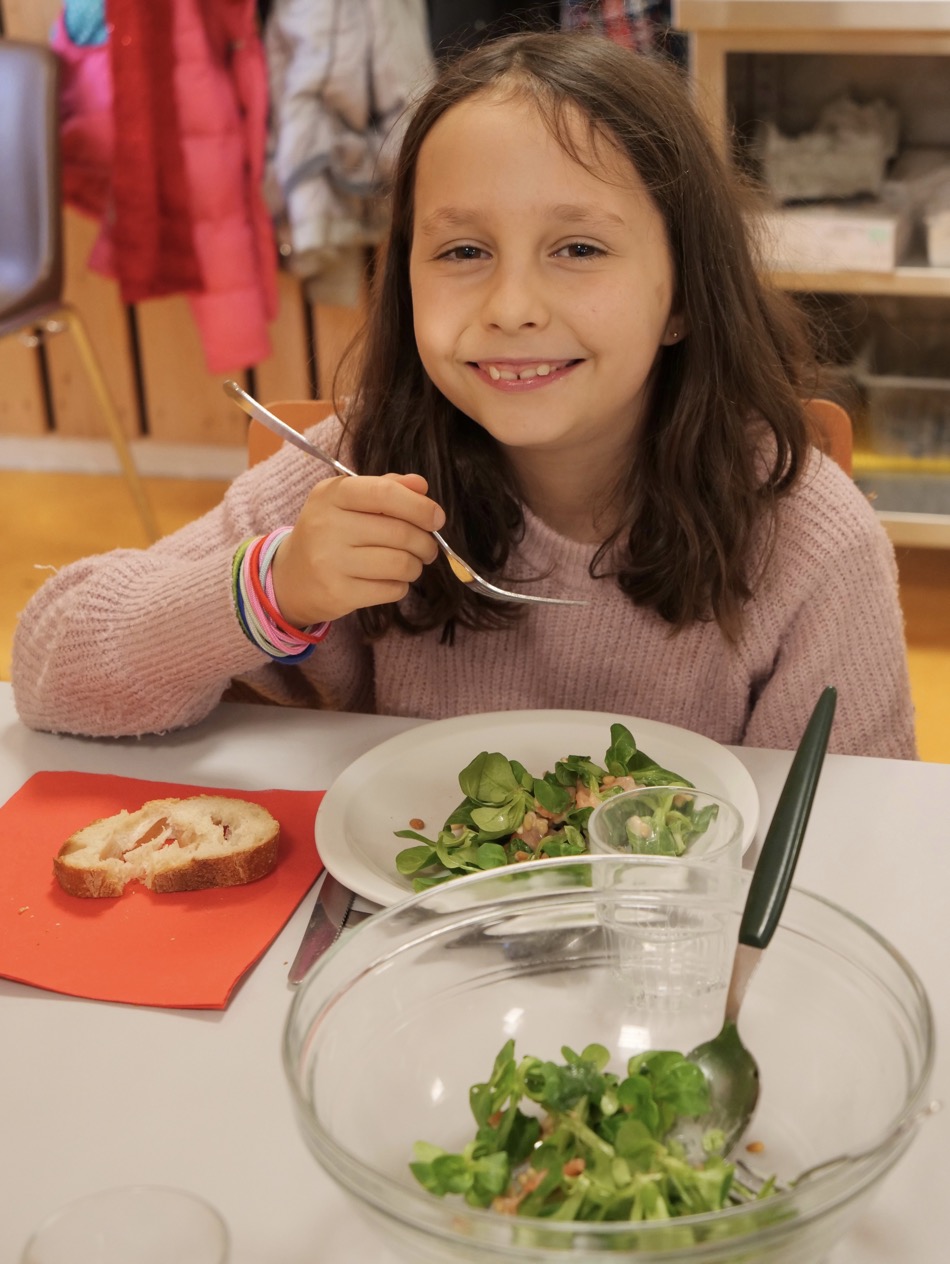Why do French kids eat everything? How do young French children learn to eat a variety of foods (including beets!)? French school lunch photos highlight the diversity of food served to French children (from 3 years old). But the French don’t have a monopoly on children that eat healthy. No matter where you live, you can try the same strategies to feed healthy food to young children.
I’m a parent of French children who have gone from daycare through high school in France. Over the past 20 years, I’ve learned how the French feed children at school and at home. In fact, my initial interest sprung from my children’s comments at home. “Can you make spinach like they do at the cantine?” for instance. (I almost fell over in my chair when I heard this.)
My initial articles on the school lunch topic garnered massive interest from people around the world. To address the many questions I received, I researched the topic and published an e-book about the school lunch program. One of the people I interviewed at the time was the director of a public daycare centre, Catherine Colin. She was instrumental in teaching me why French kids eat everything. It all starts at home, and is then reinforced in daycare and pre-school.
Food recognition is key
According to Colin, the key to feeding children healthy food is food recognition. Young children naturally stay away from foods they don’t recognize. French kids eat everything because they have seen everything numerous times. Exposing children to many foods visually on a regular basis is key. Over time, recognizing foods becomes easier and eventually tasting them for the first time is not a large hurdle.
At the daycare center Colin and her staff work hard to present food to children repeatedly in many different situations. Here are her five tips for increasing food recognition:
Keeping food and food presentation simple
A child needs to know what they are eating. Disguising vegetables with heavy sauces, making them look “child friendly” or cute, or putting them in a stew are no-no’s. The simpler the food, the more recognizable it is and thus chances of consumption quickly increase.
Presenting everything at once
Using a plate with divisions (five or six divisions), the young child will receive all four “courses” at once. These include: the entree (starter), plat principal (main dish), fromage (cheese or yogurt for example), and dessert. Daycare assistants will allow children to eat food in whatever order they want. The children are taking in the sights and smells of all the foods present, and may eventually try everything. It’s all about presenting foods over and over. When the child transitions from daycare to preschool, the tray system is removed and food is brought to the table in courses.
Exposure to growing foods
Planting vegetables and fruits in small gardens (even window sills), watching them grow and picking them to eat (raw or cooked) is key to food recognition. Children in daycares and preschools are often exposed to gardening activities within the school day.
Cooking foods together
Children as young as two or three will help cook or bake in daycare centers. Peeling apples, chopping vegetables and producing a tart or vegetable soup with the class is encouraged. Kids are usually curious enough to eat the food they themselves created, thus exposing them to the cooking process while increasing recognition of real foods.
Playing with foods
Toy kitchens, wooden or plastic fruits and vegetables and other foods are front and center at most daycare centers. Becoming familiar and comfortable with food throughout the day, and not just at meal time, is key to recognition and eventually fostering diversity in flavors and textures.
According to Karen Le Billon, author of French Kids Eat Everything, the French succeed at presenting and offering foods over and over to their very young children. The secret, she believes, to why they eat “everything.” She explains:
“French parents are provided with very different information about food, and about children’s eating habits, than American parents. This is because French doctors, teachers, nutritionists and scientists, view the relationship between children, food and parenting very differently than North Americans. They assume, for example, that all children will learn to like vegetables…French psychologists and nutritionists have systematically assessed the average number of times children will have to taste new foods before they willingly agree to eat them: the average is seven, but most parenting books recommend between ten and fifteen.”
If healthy habits and healthy children interest you, please sign up for my newsletter and I will send you the latest news, articles and information on this hot topic!
Photo credit Manon Girardin
Disclaimer: This post may contain affiliate links. If you click one of them, I may receive a small commission at no extra cost to you.













